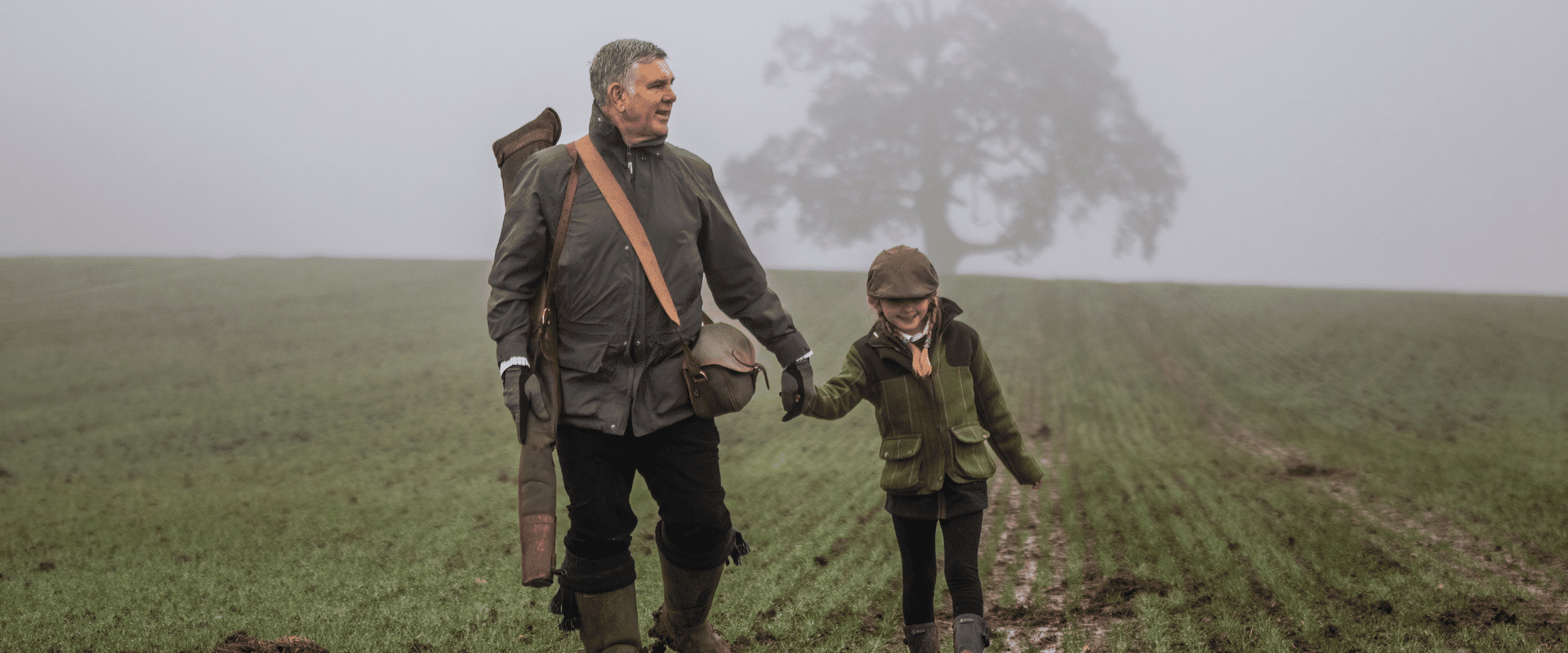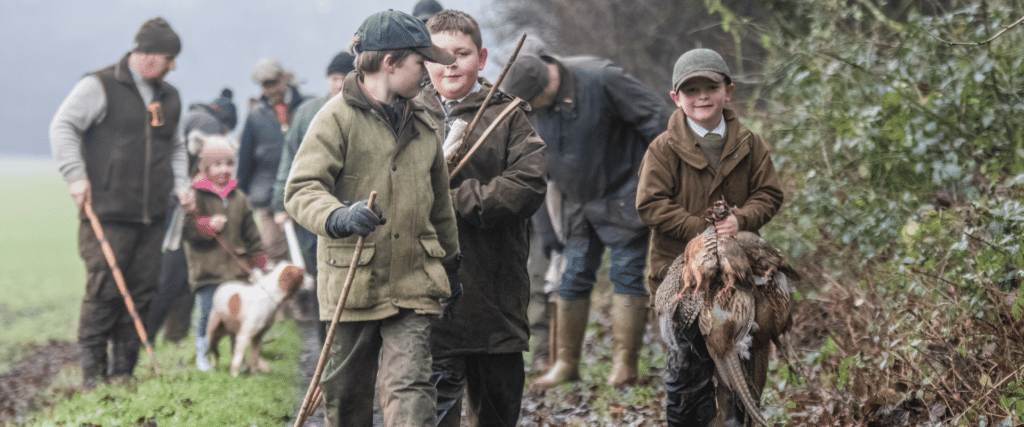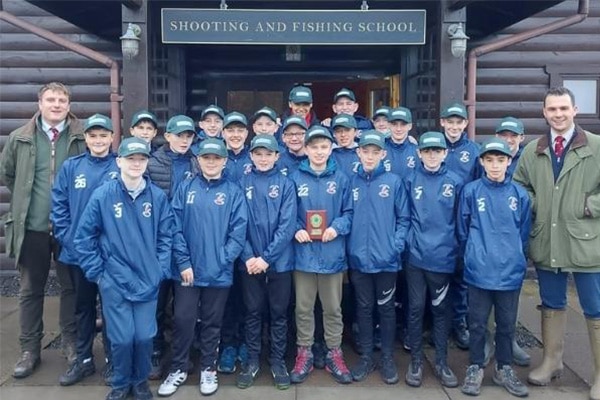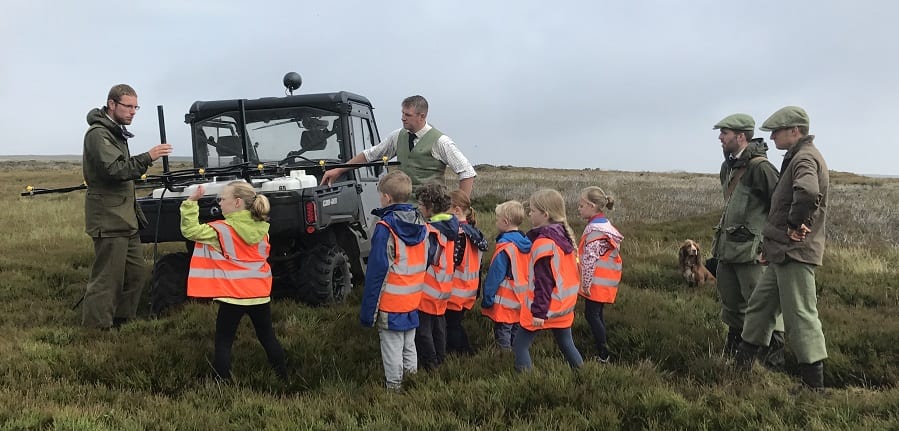
A rising star
Duncan Thomas, BASC North director, tells us about a young man who has come a long way in the ten years since he joined the BASC Young Shots programme.
Get information on the legal shooting season for mammals and birds in the UK.
Apply for funding for your project or make a donation today
Comprehensive information and advice from our specialist firearms team.
Everything you need to know about shotgun, rifle and airgun ammunition.
Find our up-to-date information, advice and links to government resources.
Everything you need to know on firearms law and licensing.
All the latest news and advice on general licences and how they affect you.


This article first appeared in Fieldsports Journal. BASC members can receive a 20% discount on subscriptions with code BASC20
How did your parents introduce you to the world of fieldsports? Was exposure gentle and gradual or were you forced out every Saturday in all weathers?
Ensuring I pass on my passion for shooting, fishing and stalking is imperative, so over the years I have canvassed opinions from other parents for tips and tricks.
My two young daughters – aged three and five – regularly accompany me in the field and, touch wood, rarely grumble. Some may feel they are too young, and I have on occasion sensed side-eye glances of disapproval when hoisting the youngest into a backpack ahead of a day’s grouse shooting, but if we delay involving our children until they are teenagers, chances are they will have found an alternative hobby that involves shopping malls and backlit screens.
Sounds obvious, but it is all about positive association: your youngster needs to associate the outdoors with pleasure. My primary goal is to avoid meltdowns in the field at all costs and I am finally starting to see my patience pay off as both children seem to genuinely want to come out each time.
So, here are my top tips to help you pass this parenting module with a distinction.
If you wake up to it raining stair-rods, postpone your outing. Do not think you’ll ‘toughen’ up your child by making them endure inclement weather – you will simply make them miserable.
For pheasant shooting, you want one of those crisp, sunny early season days. For fly fishing, stalk brown trout in Hampshire in the summer when it is warm and balmy – forget winter salmon fishing in the Highlands.
For grouse, go when there’s a breeze so the midges aren’t around.
You will need to keep one eye on the horizon, if it looks like there’s dark nimbus clouds looming, abandon the hill before your child’s mood sours with the onslaught of showers.
Simple but effective: all kids like snacks. This is bribery I know, and I am sure parenting gurus would frown at this suggestion but for me it is all about positive association and creating happy memories.
If we are scheduled for a day out in the field at the weekend, I will limit my daughters’ intake of treats in the days prior. Rather than feeding the usual Haribo and Heroes, I make homemade cake, cocoa protein balls, rainbow-coloured meringue drops and sugar-free gummy bears.
Snacks are life when you are five years old.
When it comes to little legs, less is more. Eight hours in the field can be tiring for adults let alone when you are knee-high.
Depending on the weather, opt for either a morning or afternoon session. I have learnt this the hard way – last season my daughter had a super morning ‘working’ my old cocker spaniel so I decided to stay out longer than I should.
I could see she was really enjoying herself so I didn’t have the heart to say that it was home time. By the fourth drive she’d had enough and was suddenly exhausted, but we were miles from the car.
Tears, meltdowns and tantrums later, I had to carry her for what felt like 10 miles. It was a very negative note to end the day on, and totally avoidable
Ensure your child feels like an essential cog by giving them a role to play. This could be collecting up your spent shells or carrying your fly box.
My girls love feeling useful and like to be more than just observers. For older children, you might like to give them an Orvis PractiCaster fly rod or a Montecarlo training shotgun to carry to teach them about casting and muzzle awareness.
Make sure your kids learn safety fundamentals from the very beginning. Keep it simple and cover the basics. If they are old enough to handle an unloaded shotgun, teach them to dry mount and use their dominant eye and hand, how to be in the right position, how to breathe properly and squeeze the trigger.
Kids will enjoy the dressing up element of the day and it goes without saying that smalls need the correct safety gear.
For starters, ear defenders, hat and safety glasses if standing on the peg with you. Glasses and hat for the riverbank.
Many clothing brands now offer kids sizes to help them look the part. Opt for wellies from premium rubber boot brands like Le Chameau, and for inexpensive Tattersall shirts and tweeds that won’t make you weep as the darling beansprouts quickly outgrow.

You need to put away your mobile. More than anything your child will revel in being your sole focus. This act alone will reinforce the positive association with fieldsports.
Remember, children spell love T-I-M-E. Weekend work crises can wait.
How remote will you be? Have you been there before? If the weather turns, could you get your child off the hill?
When my eldest daughter was just 18 months old she accompanied me red stag stalking in the Highlands. She was in a child carrier on my husband’s back as I walked ahead with a rifle on my back.
Although we were remote, we were always near to the truck. I culled a hummel (antler-less stag) about 300 yards in front of her, and then gralloched it right alongside her. She observed silently, utterly fascinated. Her eyes were on stalks.
When done, it was an easy 15-minute walk downhill to the vehicle. The entire stalk was designed around giving her a positive experience.
The most obvious one is Bambi, which presents a powerful statement against hunting.
I inadvertently allowed my girls to watch The Fox and the Hound recently, which features a bad-tempered elderly hunter called Amos Slade and his scruffy lurcher Chief. They had no respect for quarry. The ensuing questioning put me in a tricky situation. These films have a persuasive influence on how kids view nature. Best not downloaded.
When smalls are super young you might only take them out a handful of times throughout the season. If every outing is super positive you can just build on that each time.
If the stars align, meaning the weather is dry, the terrain is easy and you’ve got the mental bandwidth to give them your sole focus then there is no reason why you couldn’t keep going out. But if they don’t fancy it for whatever reason, don’t force them.
A good way to introduce kids to fishing is to befriend a local fish farmer. Every year we visit a rainbow trout farmer in Scotland who kindly allows each daughter a cast in his pools. Within 10 minutes they’ve hooked themselves a fish which makes them squeal with delight.
Rather than spending hours casting fruitlessly on a riverbank, this sure-fire method is ideal for letting them experience the tug as well as providing food for that night’s supper.
Making the link between fieldsports and food is imperative. It completes the circle. Rather than taking oven-ready game home from the shoot, opt for birds in feather. That way you can get the kids plucking and mucking in, plus having not been hung for long the flavours will be less intense.
Incorporating game and wild fish into their favourite dishes so that they hardly notice seems to work well. Particular favourites include sea trout fishcakes, venison bolognese and pheasant korma.


Duncan Thomas, BASC North director, tells us about a young man who has come a long way in the ten years since he joined the BASC Young Shots programme.

Crieff Juniors FC 2008 squad have a new sponsor in the form of BASC, giving the team the opportunity to try their hand at shooting sports.

Let’s Learn Moor 2021 set to educate and inspire thousands of primary school children from across the UK about our upland habitats.
Sign up to our weekly newsletter and get all the latest updates straight to your inbox.
© 2025 British Association for Shooting and Conservation. Registered Office: Marford Mill, Rossett, Wrexham, LL12 0HL – Registered Society No: 28488R. BASC is a trading name of the British Association for Shooting and Conservation Limited which is authorised and regulated by the Financial Conduct Authority (FCA) under firm reference number 311937.
BASC Direct Ltd is an Introducer Appointed Representative of Agria Pet Insurance Ltd who administer the insurance and is authorised and regulated by the Financial Conduct Authority, Financial Services Register Number 496160. Agria Pet Insurance is registered and incorporated in England and Wales with registered number 04258783. Registered office: First Floor, Blue Leanie, Walton Street, Aylesbury, Buckinghamshire, HP21 7QW. Agria insurance policies are underwritten by Agria Försäkring.
If you have any questions or complaints about your BASC membership insurance cover, please email us. More information about resolving complaints can be found on the FCA website or on the EU ODR platform.